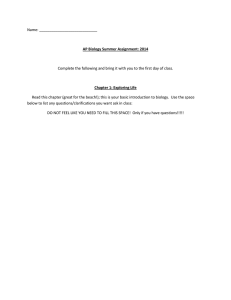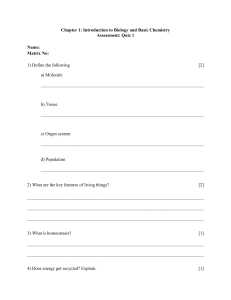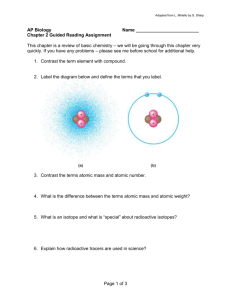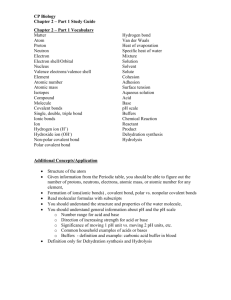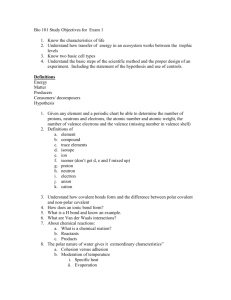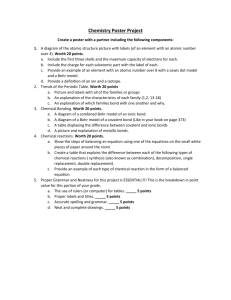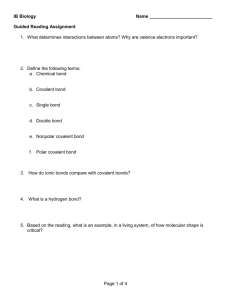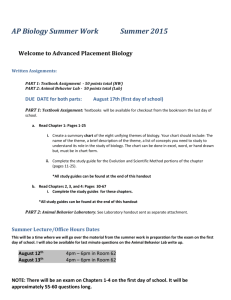AP Bio Summer Assignment
advertisement
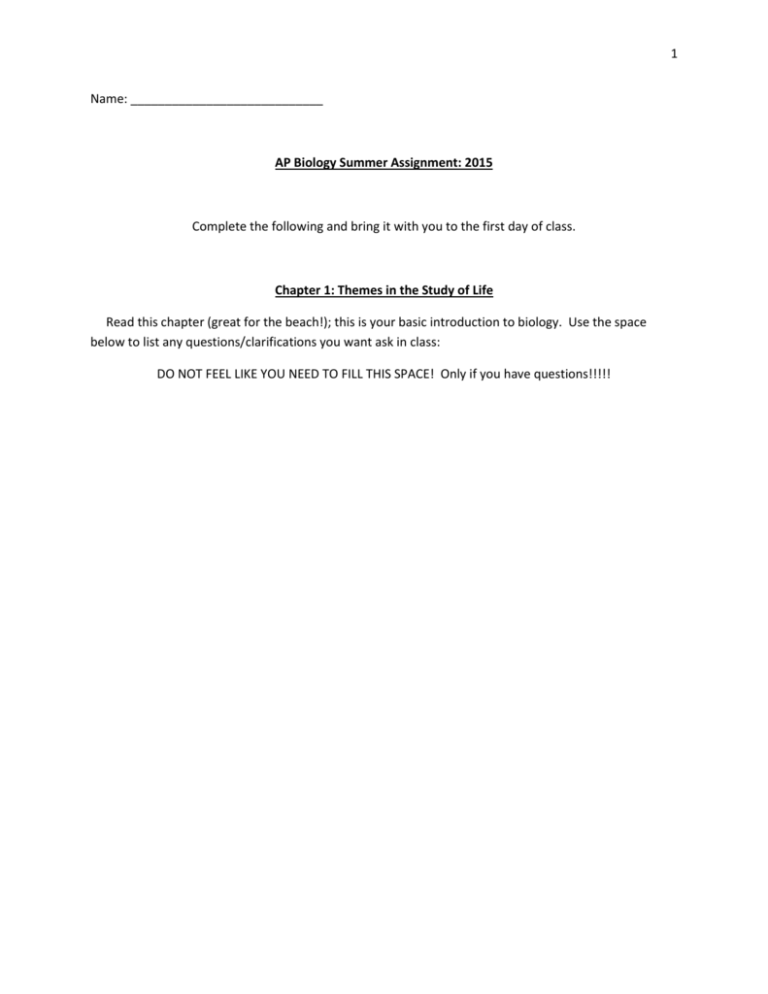
1 Name: ____________________________ AP Biology Summer Assignment: 2015 Complete the following and bring it with you to the first day of class. Chapter 1: Themes in the Study of Life Read this chapter (great for the beach!); this is your basic introduction to biology. Use the space below to list any questions/clarifications you want ask in class: DO NOT FEEL LIKE YOU NEED TO FILL THIS SPACE! Only if you have questions!!!!! 2 Chapter 2: The Chemical Context of Life A review of basic chemistry principles; answer the following after reading this page-turner of a chapter! 1. Contrast the term element with compound. 1b. Label the diagram below and define the terms that you label. 2. Contrast the terms atomic mass and atomic number. 3. What is the difference between the terms atomic mass and atomic weight? 4. What is an isotope and what is “special” about radioactive isotopes? 5. Explain how radioactive tracers are used in science: 6. What determines interactions between atoms? Why are valence electrons important? 3 7. Define the following terms: Chemical bond Covalent bond Double bond Valence Electronegativity Polar covalent bond 8. How do ionic bonds compare with covalent bonds? 9. Compare and contrast hydrogen bonds and van der Waals interactions: 10. Based on the chapter reading, what is an example, in a living system, of how molecular shape is critical? Complete the quiz on the next 3 pages: 4 5 6 7 Chapter 3: Water and Life 1. Why is water considered a polar molecule? 2. For each of the below listed properties of water – briefly define the property and then explain how water’s polar nature and polar covalent bonds contribute to the water special property. Include an example in nature of each property also. a. Cohesion b. Adhesion c. Surface tension d. High specific heat e. Heat of vaporization f. Evaporative cooling 3. What is special about water and density? 4. Define the following terms: a. Solute b. Solvent c. Aqueous solution d. Hydrophilic 8 e. Hydrophobic f. Colloid g. Hydration shell h. Molarity 5. Label the diagram below to demonstrate the dissociation of the water molecule and then relate this diagram to pH. 6. What defines an acid and a base? 7. Why are “apparently” small changes in pH so important in biology? 8. What is a buffer? 9. What is acid precipitation and why is it important to living organisms? Finally, complete the workbook packet that follows this page: 9 10 11 12 13 14
